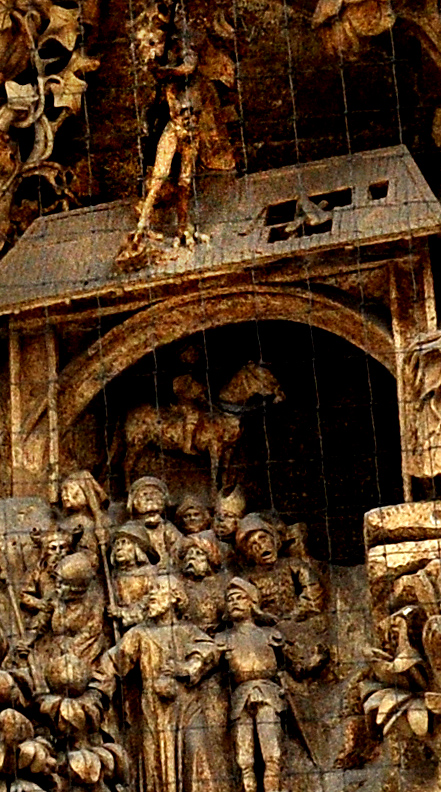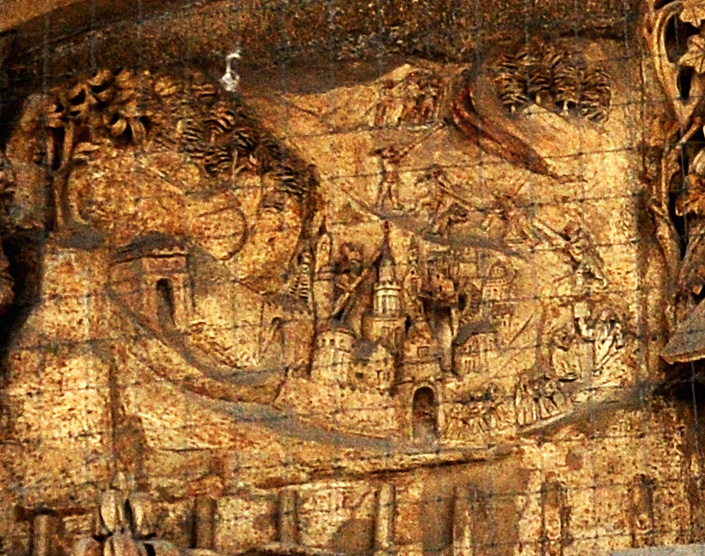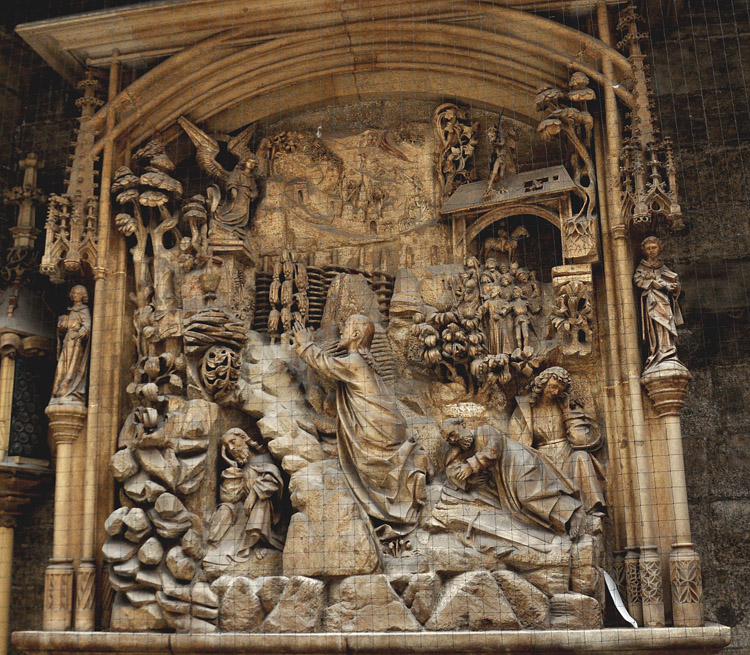In the center Jesus kneels and prays, "My Father, if it be possible, let this chalice pass from me. Nevertheless not as I will, but as thou wilt." Like all images of this episode, the metaphorical chalice is represented as a real one, and the Father's will by an angel pointing to the chalice. In this case, lest anyone miss the point of the metaphor, there is a cross in the chalice.
While Jesus prays the three disciples he has taken with him fall asleep. John, sans beard as usual, is on the far right. Below him is Peter, identified by his short, square beard and by the key and book that lie before him. James is in a shallow grotto on the left.
Some German-language sources refer to the relief as the Lacknersher Ölberg, the Lackner "Mount of Olives." This is what the place is called in Luke (22:39), and the "Gethsemane" of Matthew and Mark is Hebrew for "olive press" (Catholic Encyclopedia, s.v. "Gethsemani). Some other images of the episode include olive trees with their characteristic long, thin leaves, but this work has nothing of the sort.
 The artist adds several details found in John's gospel rather than Mark and Matthew. The latter report that Judas arrived with a "crowd" carrying clubs and swords; in John, as here, the "crowd" is a cohort of soldiers and servants of the chief priests and Pharisees, who carry "lanterns and torches and weapons" (18:3). Also, John and Luke say Judas conspired against Jesus because "Satan entered into him" (John 13:27, Luke 22:3), and in the relief a cloven-hoofed devil stands atop the gate in the upper right corner.
The artist adds several details found in John's gospel rather than Mark and Matthew. The latter report that Judas arrived with a "crowd" carrying clubs and swords; in John, as here, the "crowd" is a cohort of soldiers and servants of the chief priests and Pharisees, who carry "lanterns and torches and weapons" (18:3). Also, John and Luke say Judas conspired against Jesus because "Satan entered into him" (John 13:27, Luke 22:3), and in the relief a cloven-hoofed devil stands atop the gate in the upper right corner.
The artist also follows John in locating the place of this episode. Mark and Matthew say it was a villa, a country place or farm, called "Gethsemane," Hebrew for "oil press." In Luke it is the "Mount of Olives," perhaps another way of saying the same thing. But in John, it is "over the brook Cedron, where there was a garden" (18:1). In the area of the relief above Jesus a woven fence with grape clusters identifies the place as a garden.
Since all four writers place the garden or villa outside Jerusalem, the artist uses the space above Jesus to present the city within its walls. He even takes the eye past those walls to a scene where soldiers are directing a man carrying a cross up a hill, a clear reference to the events of the following day.

